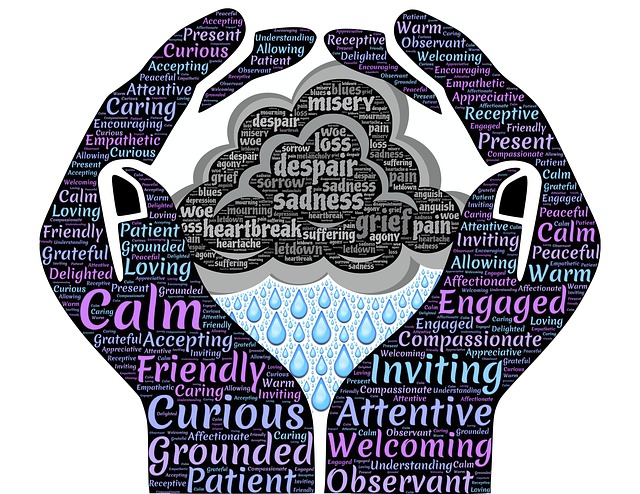In the previous post, I discussed how nervousness can affect your mind and body and impact your performance. I also looked at two strategies – naming your feelings and accessing your success anchor – to gain control over your nervousness. In this post, I want to focus on how our thoughts can affect our performance.
Our negative thoughts
When we are nervous or anxious about our performance before some public activity, our minds tend to race, and we lose control over our thinking. We can be bombarded with a whole host of negative thoughts – “What if I forget what I was going to say?”, “What will people think of me?”, “How will I ever recover if I embarrass myself in front of my colleagues?”, “Will I cope if they reject me?”, or “What if I do not meet their expectations?”
These negative thoughts often lead to procrastination. I have found many times that people fail to start something because of these kinds of negative thoughts. Sometimes, these disabling thoughts are not at a conscious level – they may just manifest as nervousness or anxiety. This is where an exercise to name your feelings and the thoughts that create them can be very helpful.
Reframing with positive thoughts
I was recently following up people by phone who had participated in one of my courses – effectively a coaching session. I was wondering what was causing me to procrastinate. I have facilitated hundreds of courses and the people I was ringing were participants on my most recent course and yet I was nervous about the phone activity. I started to follow the suggested step of naming my emotions and identifying the thoughts that gave rise to them. The thoughts predominantly related to, “Would I live up to their expectations?”, and “Could I actually provide them with some help with their practice or project?”. Sometimes, our doubts are not rational, but they persist.
Getting in touch with my feelings and negative thoughts enabled me to move on and actually conduct the phone coaching discussions. What I found was that by controlling my negative thoughts through mindfulness, I was able to change my mindset and view the phone coaching differently. I came to appreciate the very positive aspects of this exercise and this helped me to reframe the activity as relationship building. I found that the participants were actually putting into practice in their workplaces the skills we covered in the course and they were having a positive impact on their workplace and the people in their team (intrinsically rewarding feedback!).
I came to the realisation yet again (somewhat blocked by my current anxiety), that my major role was to listen and ask questions for clarification and understanding (mine and theirs). The experience then was very reaffirming. Reframing the activity in positive terms, rather than focusing on possible (but not probable) negative outcomes, freed me up to perform better in the coaching interviews. However, I have a long way to go to be free of “ego” concerns.
Becoming free of ego concerns
When we revisit our concerns or negative thoughts, we often have in advance of some public activity, we begin to realise how much “ego” is involved. We are concerned about our image – how we will be viewed or assessed, what impact our performance will have on us or our future, what impression we will make or how embarrassed will we be if we “fail”.
These issues constitute ego concerns. Tom Cronin (The Stillness Project) in his blog post, How to Find the Confidence to Speak in Front of 300 People, suggests that controlling your ego is a key aspect of gaining that confidence. The less ego plays in determining how you feel about your forthcoming performance, the better you are able to just be present and appreciate the moment. Your presence and sense of calm can be very effective in helping you access your creative abilities and best performance. He recommends daily meditation as a way to dissolve the ego and gain peaceful presence, no matter what we are doing:
… meditation plays a HUGE role. In the stillness of meditation we connect with that unbounded state of peaceful presence, beyond the limits of the ego. The work is to put aside time to meditate, and then outside of meditation, to observe the difference between that which is ego and that which is not.
To remove all ego from our thoughts and activities requires a very advanced state of mindfulness. As Tom indicates, this is a lifetime pursuit, because ego often gets in the road of our performance and our ability to have a positive impact. However, we cannot wait until we are cleansed of all ego before we perform.
I have successfully addressed 1,800 people at a World Congress in Cartagena, Colombia in South America. The topic was on action learning and I was doing the opening address as President of the Action Learning and Action Research Association. My luggage had not arrived by the start of the Congress, so I had to present in my jeans that I wore on the flight over and a colourful Cartegena t-shirt I bought in the street outside the Congress.
I had to let go of any ego concerns about my standard of dress (the other dignitaries were in suits) if I was to actually get up on the stage. I think this need and the casualness of my dress helped me in my address – it was particularly well received by the Colombians who were present amongst the representatives from 61 countries. I certainly had ego concerns but the momentousness of the occasion and the potential contribution of the Congress to global cooperation, helped me to get through and manage my nerves. But you can see I still have ego concerns that are alive and active when I undertake a relatively simple phone coaching activity (as described above) – lots more meditation to do!!
As we grow in mindfulness, we can clear anticipatory, negative thoughts about our performance, identify and control our emotions and progressively remove our ego concerns.
By Ron Passfield – Copyright (Creative Commons license, Attribution–Non Commercial–No Derivatives)
Image source: courtesy of xusenru on Pixabay
Disclosure: If you purchase a product through this site, I may earn a commission which will help to pay for the site, the associated Meetup group and the resources to support the blog.






